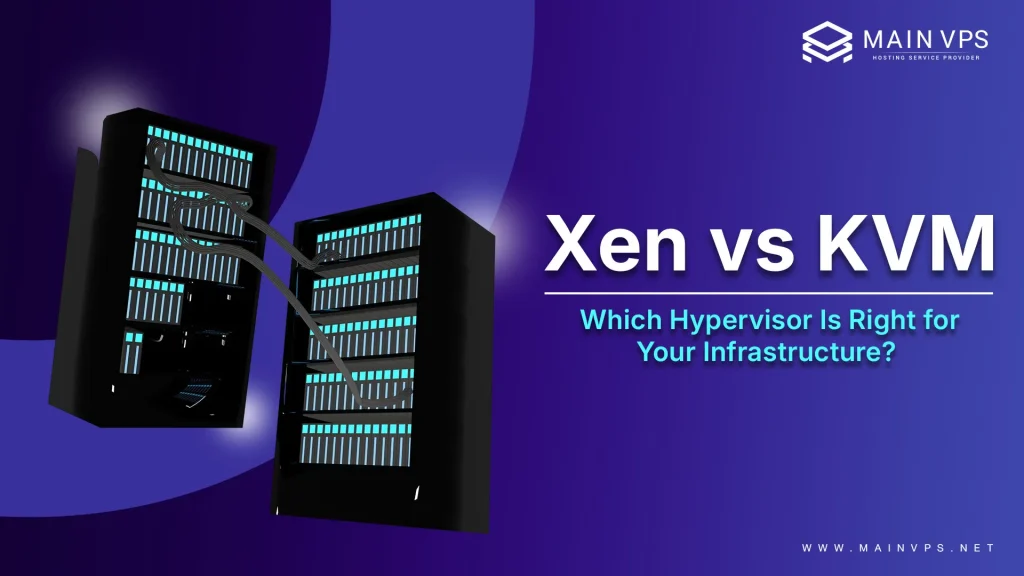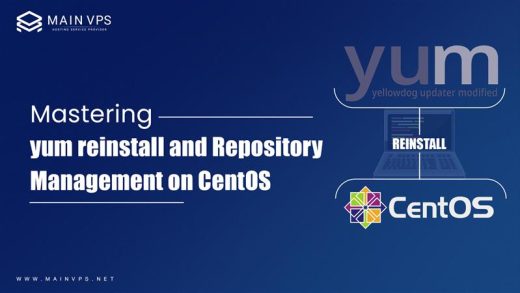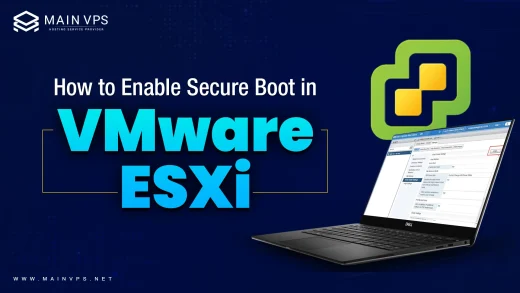
Making the appropriate choice of a virtualization platform goes beyond a technological consideration; it influences the scale, security, and the overall management of your IT infrastructure. Xen and KVM are both acclaimed contenders from the open source community. Even though they both have a rich history and are widely adopted, their architectural foundations differ significantly.
We will highlight the practical differences between Xen and KVM so you may make the appropriate decision based on your environment, your team, and your workloads.
What Is KVM?
KVM, which stands for Kernel-based Virtual Machine, is a virtualization module part of the Linux kernel. It transforms your Linux Operating System into a type-1 hypervisor, enabling the creation and management of virtual machines (VMs) with complete hardware-level isolation.
KVM isn’t a standalone product—it’s the base layer. To interact with it, you usually pair it with tools like:
libvirt(API and service manager)virt-manager(GUI)virsh(CLI)- QEMU (hardware emulation)
It’s popular in cloud environments, like OpenStack, and is supported by major Linux vendors (Red Hat, Canonical, SUSE, etc.).
What Is Xen?
Xen is a bare-metal (type-1) hypervisor, originally developed at the University of Cambridge and now maintained by the Xen Project. Unlike KVM, Xen doesn’t require an underlying Linux OS to function—it runs directly on the hardware.
It separates the hypervisor logic from user operations by using two types of domains:
- Dom0 (control domain) manages the hypervisor and guest VMs.
- DomU (unprivileged domains) are the guest VMs themselves.
Xen can run both fully virtualized guests (HVM) and paravirtualized guests (PV), giving it flexibility in different hardware environments.
Xen vs KVM: A Feature-by-Feature Breakdown
| Feature | KVM | Xen |
|---|---|---|
| Type | Type-1 (via Linux kernel) | True Type-1 (bare-metal) |
| Guest OS Support | Full virtualization (HVM) only | Full and Paravirtualization |
| Management Tools | Requires third-party tools | Managed via Dom0, e.g., XenCenter |
| Ease of Use | Easier if you know Linux | Steeper learning curve |
| Container Support | Supports tools like LXC via Linux | Not native |
| Security | Relies on Linux kernel modules (e.g., SELinux) | Strong VM isolation via separate domains |
| Performance | Excellent with modern CPUs (Intel VT, AMD-V) | Good, especially with PV guests |
| Cloud Compatibility | Used in OpenStack, AWS, GCP | Historically used in AWS and Citrix |
Performance in the Real World
KVM benefits from tight integration with the Linux scheduler and kernel features. It handles I/O, CPU, and memory with near-native speed when paired with VirtIO drivers.
Xen, with its Dom0 and DomU architecture, offers great isolation—especially important in multi-tenant or public cloud environments. Paravirtualization can reduce CPU overhead on older systems but isn’t as widely supported in modern setups.
Bottom Line: KVM is usually simpler to optimize, while Xen may shine in environments where guest separation and legacy support are critical.
Security: How Do They Compare?
- KVM relies on existing Linux security tools like AppArmor, SELinux, and cgroups.
- Xen isolates the hypervisor and management layers through Dom0, which adds another layer of separation between hardware access and guest systems.
If you’re running multiple VMs for untrusted users (think cloud hosting), Xen’s isolation model may be slightly stronger. That’s one reason why early AWS infrastructure used Xen before moving more toward KVM-based Firecracker.
Use Cases: When to Use Xen or KVM
Use KVM if you:
- Are comfortable working with Linux.
- Need to integrate virtualization into a Linux environment or cloud platform.
- Want a modern, well-supported hypervisor with ecosystem flexibility.
- Prefer simplicity with tools like
virt-manager.
Xen is for you if you:
- Need strict guest isolation (e.g., public cloud).
- Run workloads that benefit from paravirtualization.
- Have legacy infrastructure or specific hardware needs.
- Want a battle-tested hypervisor with minimal Linux dependencies.
Real-World Examples
- KVM is used by Google Cloud, IBM Cloud, and is the default in many Linux distributions.
- Xen powers virtual environments in Citrix Hypervisor and was famously used by AWS for years.
Frequently Asked Questions
Q1: Is KVM easier to use than Xen?
Yes. KVM integrates with Linux tools you might already know. With GUI tools like virt-manager, it’s easier to get started compared to Xen’s more manual setup.
Q2: Can Xen and KVM be used together?
Not on the same host. They both need to control the system’s virtualization extensions (VT-x or AMD-V), so they can’t coexist on one machine.
Q3: Is KVM more popular than Xen?
In current data center and cloud deployments, yes. KVM has gained wide adoption due to its Linux-native design and compatibility with cloud stacks like OpenStack and Kubernetes.
Q4: Which is better for security?
Both are secure, but Xen has a slight edge in high-isolation environments due to its domain separation model. That said, KVM with proper SELinux and sandboxing is very secure too.
Q5: Which hypervisor is better for containers?
KVM integrates more naturally with container tools like LXC, Docker, and systemd-nspawn since it’s part of Linux. Xen doesn’t natively support containers.
Final Thoughts
KVM for VPS is the preferred hypervisor in the rest of the world running Linux— straightforward, well-optimized, and heavily documented. Perfect for DevOps, self-service systems, and virtualization in enterprises.
Xen is still a strong contender when your top priorities are guest separation, isolation, or you’re working in legacy environments that benefit from its architecture.
At the end of the day, they’re both excellent—just built for slightly different goals.





